25 Best Overall Position Groups for 2015 College Football Season – Bleacher Report Star power is a big part of success in college football, but any coach will tell you he’d prefer to have several good players at a position than just one great performer. Being deep and balanced makes it possible to overcome injuries and to spread the work around, thus lessening the chance of fatigue as the year goes on. It also makes it harder for opponents to key in on one particular player, since those around him can pick up the slack. Having a great left tackle is fine, but if the rest of the offensive line is suspect, then that negates his greatness. The same goes for having just one go-to receiver or a single defensive player who handles most of the workload. Teams that can avoid depending on individuals and instead rely on groups have the best chance to win in the long run. We’ve ranked the top 25 overall position groups in the FBS ranks heading into the 2015 season, taking into account how their past performance and expected role this season has and will contribute to their team’s success. Check out who made the list and where they ended up and then give us your thoughts in the comments section. Not including running backs, Arizona had eight players with at least 14 receptions in 2014, helping it win the Pac-12 South and reach 10 wins for the first time since 1998. Seven of those players are back for this season, though the Wildcats are so deep at the position that they shifted DaVonte’ Neal to cornerback. Even with that move, Arizona has a sextet of wideouts who combined for 221 catches, more than 2,700 yards and 21 touchdowns. Fifty FBS teams did not have 2,700 total passing yards in 2014. Cayleb Jones, who sat out 2013 after transferring from Texas, had team highs in receptions (73), yards (1,019) and TDs and is a huge target at 6’3″ and 215 pounds. Most of Arizona’s other receivers are on the small side, but with its quick-strike offense, those slot options still get plenty of looks and are hard to track on defense. You won’t find deep and talented position groups just among the power-conference teams, though not many outsiders have enough to crack our top 25. Georgia Southern is the exception, as its stable of running backs showed last season that it’s no joke. The first-year FBS program led the country in rushing at 379.9 yards per game, and while quarterback Kevin Ellison (1,082 yards, 12 touchdowns) was a big part of this option attack, he was far from the only contributor. Matt Breida ran for 1,485 yards and 17 TDs as a sophomore, averaging 8.7 yards per carry, while Alfred Ramsby had 691 yards and 12 scores as a freshman. Granted, much of that was against Sun Belt Conference teams, but against ACC schools North Carolina State and Georgia Tech, the Eagles averaged 264.5 rushing yards. This year they get to take on West Virginia and Georgia. The players in USC’s secondary this season are among the most talented on any roster in FBS, but how the team will utilize them is still uncertain. At maximum effort and usage, the Trojans have the potential for the top defensive backfield in the country, even if two stars see little time there. Junior Su’a Cravens was a stellar safety in 2013 and then transitioned to a hybrid linebacker/safety role last year; he could see even more time at LB this fall. Adoree’ Jackson, who started at corner as a true freshman in 2014, also played receiver and is USC’s top kick returner, and the teams hopes to use him more on offense this season. That means more pressure will be on the rest of USC’s defensive backs to lessen the need for Cravens and Jackson. Junior Leon McQuay and sophomores Chris Hawkins and John Plattenburg are the ones whose play would keep Cravens at linebacker, while sophomore Jonathan Lockett, redshirt freshman Lamont Simmons and 5-star true freshman Iman Marshall would be the ones taking the load off Jackson’s plate. Two of the most notable pieces of the group that became known as the “Landsharks” are no longer patrolling the back line for Ole Miss, but the Rebels secondary again figures to be among the best in the country in 2015 thanks to a deep group of contributors. Gone are safety Cody Prewitt and cornerback Senquez Golson, who had 13 of the team’s 22 interceptions last year. But seniors Trae Elston and Mike Hilton and junior Tony Conner combined for five picks in 2014 and return to the team, with Conner and Hilton able to play both safety or corner. Tee Shepard, a former Notre Dame signee who came to Ole Miss in 2014 after a stint at junior college, should finally get to show his hype was justified after missing last season with a toe injury. And the Rebels also bring in an impressive group of secondary recruits, led by No. 1 junior college corner Tony Bridges. Penn State lost both of its defensive ends from 2014, but with the return of interior linemen Austin Johnson and Anthony Zettel, the Nittany Lions should be in contention to perform as well as last year’s group did. For the record, that means matching the efforts of the nation’s No. 2 overall defense and No. 3 run defense, despite having to replace two starters. According to Greg Pickel of PennLive.com, PSU defensive line coach Sean Spencer considers what he’ll be working with in 2015 his deepest group “from tackle to end.” Backup tackles Tarow Barney and Parker Cothren combined for five tackles for loss in relief of Johnson and Zettel, and others saw time in relief of Barney and Cothren. The defensive end positions remain open heading into the fall, but the Lions have six or seven candidates to rotate at those spots. LSU has had seven defensive backs drafted into the NFL since 2012, including cornerback Jalen Collins, who went in the second round in May. Several of these corners and safeties have been underclassmen, and while this constant attrition can lead to some headaches, it also continues to make LSU an enticing place for the top secondary prospects to go. It’s also why the loss of Collins and safety Ronald Martin (who graduated) won’t make the 2015 Tigers secondary any less imposing, since reinforcements have already arrived via the latest recruiting class. Kevin Toliver II, the second-best cornerback prospect in the 2015 class, per 247Sports, enrolled early and has a strong chance to start right away. There’s also 4-star corner Xavier Lewis and 3-star junior college safety Jeremy Cutrer coming along in the summer. There are also the holdovers to point out. Safety Jalen Mills, a three-year starter, opted to return for his senior year and will pair again with breakout sophomore Jamal Adams. The corner spots include Toliver as well as sophomore Ed Paris and junior Tre’Davious White, while every position has several other strong reserves to rotate in. Notre Dame’s linebacker corps has a clear leader (junior Jaylon Smith) and then a bunch of strong supporting players, who together will make for a ferocious unit that will be one of the strongest pieces of the Fighting Irish’s push to make the playoffs. Smith, listed by Bleacher Report NFL draft expert Matt Miller as the top linebacker on his 2016 draft big board and the most NFL-ready player at the position in college football, had 111 tackles last year. Known more for his pass coverage and pass rush, Smith also had nine tackles for loss as a sophomore. Alongside Smith are five players—Jarrett Grace, Greer Martini, Nyles Morgan, James Onwualu and Joe Schmidt—who have all started in their careers. Morgan had a strong freshman year in 2014, with 47 tackles and four starts. A perennial strength of coordinator Bud Foster’s defenses at Virginia Tech is the front four, and this year will be no different. The Hokies were 21st in total defense in 2014, despite tackle Luther Maddy missing nine games because of injury, because edge- rushers Dadi Nicolas and Ken Ekanem were so dominant. That duo combined for 19 sacks and 33 tackles for loss last season, and they return for their senior (Nicolas) and junior (Ekanem) years. Maddy, who had knee surgery in September, has 33 career starts and is expected to be back to full strength this fall. Tackles Corey Marshall and Nigel Williams and end Seth Dooley round out a strong rotation of linemen who are interchangeable and can play multiple positions. Tech also brings in one of the top defensive line prospects in the country in 4-star tackle Tim Settle. Since the 2014 season ended, Alabama has lost running backs to NFL early entry (T.J. Yeldon), transfer (Altee Tenpenny), dismissal (Tyren Jones) and a potential season-ending injury (Bo Scarbrough). So, why do we have the Crimson Tide backfield on this list? Because of Derrick Henry and Kenyan Drake. Even without knowing who, if anyone, will step up to be Alabama’s No. 3 running back for 2015, having those two standouts available is more than enough for the Tide’s run game to be in decent hands. Henry broke through as a sophomore in 2014 with a team-high 990 yards despite logging fewer carries than Yeldon, scoring 11 times. Drake missed the final nine games of last year with a leg injury, but as a sophomore in 2013 he had nearly 700 yards on 92 carries. Freshman Damien Harris, the nation’s top running back prospect in 2015, arrives this summer and could get plenty of touches because of the attrition above him. Michigan State coach Mark Dantonio’s teams have produced 21 NFL draft picks in his eight seasons, according to Joe Rexrode of the Detroit Free Press, but none of those have been offensive lineman. That’s unlikely to still be the case after the 2016 draft, since the Spartans’ line this year features as many as three players who could get selected after this upcoming season. Junior left tackle Jack Conklin is 14th on Bleacher Report NFL Draft Expert Matt Miller’s 2016 big board, while seniors Jack Allen (center) and Donavon Clark (right guard) will also draw interest. Brian Allen, who saw plenty of time as a reserve guard as a freshman, will start at left guard, and the right tackle spot belongs to promising junior Kodi Kieler. Last year’s unit allowed only 11 sacks and helped produce more than 500 yards of offense per game. Trevone Boykin was one of the biggest breakout players in 2014, but if the quarterback hadn’t had so many great targets to throw to, he might not have gotten so much Heisman praise. TCU also wouldn’t have been in contention for a playoff spot, as it will be again this season thanks to the return of its top three receivers. Josh Doctson, Kolby Listenbee and Deante’ Gray combined for 142 catches, more than 2,300 yards and 23 touchdowns last season, the first that TCU operated with an Air Raid passing attack, which ranked seventh in the country. All three players are seniors and will be looking to go out with a bang and get TCU over the hump and into the semifinals. Beyond that trip, the Frogs return four other players who had at least a dozen catches last year. Ty Slanina, now a junior, had 32 receptions. Georgia has three outside linebackers—senior Jordan Jenkins, junior Leonard Floyd and sophomore Lorenzo Carter—who could all be the top player at that position on most other FBS teams. Here, though, only two can start, yet last season they were the Bulldogs’ top three sack producers and three of the four best in tackles for loss. “Georgia has the best outside linebackers in the country, and there isn’t really a close second,” Bleacher Report’s Barrett Sallee wrote. All three have cross-trained at both middle linebacker and defensive end in order to maximize their use, so expect them to be on the field at the same time quite often. And paired with a solid duo of reserves (Reggie Carter and Tim Kimbrough) who will likely step into the starting spots left by graduated middle linebackers Amarlo Herrera and Ramik Wilson, you have the strength of a constantly improving Georgia defense. Michigan State led the nation in run defense last year, allowing less than 89 yards per game. Six opponents failed to reach 50 yards on the ground, with Baylor going for minus-20 (because of sacks) in the Cotton Bowl. The graduation of aptly named defensive end Marcus Rush and the loss of coordinator Pat Narduzzi—now head coach at Pittsburgh—could keep this group from performing as well as in 2014, but the return of star end Shilique Calhoun for his senior year will prevent the Spartans from seeing much backslide. “From what I’ve seen in practice, it’s going to be a great year for the defensive line, I feel like this is going to be one of the stronger years for the defensive line,” Calhoun told MLive.com’s Kyle Austin in April. “We’re going to do great things.” Calhoun has started every game the past two years, but he’s not alone in terms of ability on this line. Tackle Malik McDowell was solid as a true freshman and is in line for a breakout year, while senior Lawrence Thomas moves from a reserve role inside to take up Rush’s open end spot. A textbook example of depth at a position is when you can take one of the best members of that group and put him somewhere else on the field and have little-to-no drop-off. That’s what Oregon had last year by taking 1,000-yard rusher Byron Marshall and making him a wide receiver. The Ducks could do that because of the presence of Royce Freeman, who set the school’s freshman rushing record with 1,365 yards and 18 touchdowns. But they also had Thomas Tyner, who in two seasons has nearly 1,300 yards and scored 14 TDs, while Marshall still had plenty of carries in 2014 to put up almost 400 yards on the ground. Freeman, Tyner and Marshall could see even more touches this year, depending on which quarterback Oregon goes with. Junior Jeff Lockie or graduate transfer Vernon Adams won’t likely run as much as Heisman winner Marcus Mariota. Heading into last season, there was talk that Ohio State’s defensive line could be the best that Urban Meyer has ever coached, even better than the 2006 unit he had on Florida’s national title team. The projected starting lineup never materialized, though, after the Big Ten ruled Noah Spence ineligible for multiple failed drug tests. This group was still amazing, though, helping OSU rank 19th in total defense and showing vast improvement throughout the year. Defensive end Joey Bosa got most of the attention, and rightfully so, but tackles Michael Bennett and Adolphus Washington were also solid. Bennett has moved on, but Washington is back for his senior year. He and Bosa, a junior, are more than enough to make this a strong line, but they’ll get help from new starters Tommy Schutt at tackle and Tyquan Lewis at weak-side defensive end. While it did not have any wideout finish among the top 100 in the country in terms of receptions, Texas A&M still boasts one of the deepest receiver groups in recent memory. Departed senior Malcome Kennedy led the team with 53 catches, but he was just one of six receivers with at least 29 catches. The other five return, most notably junior Josh Reynolds, who caught a touchdown on 25 percent of his receptions and set the school single-season record with 13 TDs. Speedy Noil and Ricky Seals-Jones had great debut seasons in 2014, with a combined 95 catches for 1,048 yards and nine TDs, while Boone Niederhofer and Edward Pope were solid as sophomores who saw plenty of action in four- and five-receiver sets or as fill-ins. As if the Aggies weren’t loaded enough already, they also bring in 5-star freshman Christian Kirk, the No. 4 receiver in the 2015 class, who enrolled early. USC had one of the youngest offensive lines in the country in 2014, starting four different freshmen—including three true freshmen—at various times last season. Only Max Tuerk had starting experience among the regulars, and he was playing center for the first time after being a tackle and guard in his first two years. But all that learning on the job has paid off, and now the Trojans bring back the entire unit, which has gone from inexperienced to battle-tested. “Those wide-eyed freshmen from a year ago return as seasoned veterans ready to build off their experience,” Tyler Brett of SB Nation wrote. Sophomores Toa Lobendahn, Damien Mama and Viane Talamaivao will join with Tuerk, a senior who in just one season has become one of the most well-regarded centers in the country, and Chad Wheeler, a two-year starter at left tackle who missed the last five games of 2014 with a torn ACL. During its heyday in the 1980s, the Washington Redskins offensive line was known as “The Hogs” and was one of the most dominant in the game. The college version of that group is the one Arkansas will truck out for a second year in a row—another set of Hogs that collectively are bigger than most NFL lines. Arkansas averaged 218 rushing yards per game, and its line allowed only 14 sacks in 13 games in 2014. Four starters return, while a fifth player saw significant action last season. And just because the unit can, several returning Razorbacks starters have moved to new positions for 2015. Junior Denver Kirkland (6’5″, 343 lbs) started 13 games at right guard but is now the left tackle, while junior Dan Skipper (6’10”, 307 lbs) shifts from left tackle to right tackle. Seniors Sebastian Tretola (6’5″, 322 lbs) and at Mitch Smothers (6’3″, 315 lbs) remain at left guard and center, respectively, while sophomore Frank Ragnow (6’5″, 311 lbs) takes over the right guard spot after backing up Smothers at center. Throw in Arkansas’ bevy of blocking tight ends, which at times allows the team to have seven or eight big bodies crowded together on the line, and it’s difficult for anyone to push the Razorbacks around. More than one-third of Baylor’s receptions in 2014 went to players who have since graduated, and it will be starting a new quarterback this season. Yet the Bears won’t be any less explosive and dangerous through the air, not with the talent they still have on the outside. Corey Coleman, KD Cannon and Jay Lee combined for 25 touchdown catches a year ago, each hauling in at least 41 passes. Coleman had 1,119 yards and 11 TDs as a sophomore, despite missing three games, while Cannon’s 1,030 receiving yards were third-most in FBS among freshmen. Antwan Goodley and Levi Norwood were key weapons that have moved on, but that just opens up more opportunities for sophomore Davion Hall. Robert Nkemdiche is the face and focus of Ole Miss’ defensive line, but he’s nowhere near the unit’s top producer from a statistical standpoint. In many ways, he’s developed in his two years with the Rebels as an attention-grabber and decoy, enabling the rest of his teammates to dominate up front. As a result, Ole Miss led FBS in scoring defense in 2014, at 16 points per game, and was 13th in total defense. Nkemdiche, a junior defensive tackle, had just two sacks and four tackles for loss last season. But he still drew plenty of double-teams, which freed up defensive ends Marquis Haynes and C.J. Johnson and tackle Isaac Gross to collect most of the numbers. Opponents averaged just 3.47 yards per carry against the Rebels, scoring nine rushing touchdowns, and Ole Miss held Arkansas’ run game to 3.18 yards per touch. Arkansas’ leading rusher last season, Jonathan Williams, was only 36th-best in the country in yards gained. But teammate Alex Collins was tied for 44th, and together they were the only 1,000-yard running back teammates in FBS in 2014. Senior Williams and junior Collins have the luxury of running behind a pro-sized offensive line, but they’re as responsible for Arkansas’ punishing run game as any of the blockers. Williams averaged 5.64 yards per carry, and Collins went for 5.39 yards, with each scoring 12 touchdowns. Between them they had eight 100-yard games; they both topped that mark in September wins over Nicholls State and Texas Tech. Third- and fourth-string rushers Kody Walker and Korliss Marshall were no slouches either, averaging 4.78 yards on their carries. There’s a running debate between Florida and LSU as to which school owns the right to call itself “DBU” as the best producer of NFL defensive back talent in the country. Both programs have an argument, and both made this list, but in 2015 Florida has a distinct advantage. The Gators bring back four cornerbacks—senior Brian Poole, juniors Vernon Hargreaves III and Keanu Neal and sophomores Jalen Tabor and Quincy Wilson—who combined for 12 interceptions and 34 pass breakups, per CFBStats.com. Hargreaves is the best of the lot—arguably the best shutdown corner in college—while the rest “aren’t much easier to pass on,” wrote Robby Kalland of FanBuzz.com. Florida is also stacked at safety, with junior Marcus Maye and sophomore Duke Dawson. It isn’t an exaggeration to say that four of Alabama’s defensive linemen could be playing in the NFL next season, even though the Crimson Tide play a 3-4 alignment. Seniors Jarran Reed and D.J. Pettway and juniors Jonathan Allen and A’Shawn Robinson will rotate at those three positions and should easily top last year’s 8.5 sacks and 27.5 tackles for loss. Behind them are sophomores Da’Shawn Hand and Dalvin Tomlinson, former top-tier recruits and future pros in their own right who both saw significant time as first-year players in 2014. Last year Alabama ranked 12th in total defense and fourth in rushing defense, allowing only five rushing touchdowns. According to Bleacher Report’s Marc Torrence, the only area where Alabama might be lacking on this line is at nose tackle, where transfer Jonathan Taylor had been expected to be the guy before the program dismissed him following a domestic violence arrest. However, other options could work out just as well. “Junior Darren Lake, sophomore Josh Frazier or incoming freshman Daron Payne could all potentially fill that role and take Alabama’s defensive line from freakishly great to legendary,” Torrence wrote. Georgia is hoping not to repeat history, but at least it knows that its ability to recruit running backs has made it so attrition at the top won’t be an issue. A year ago, the impending arrival of freshman Nick Chubb to a stacked backfield at Georgia gave credence to the notion that the Bulldogs had the deepest stable of ball-carriers in the country. This was confirmed when Chubb, who had seen limited action over the first five games, had to take over as the starter when Todd Gurley was suspended for four games because of an NCAA violation. Gurley later tore knee ligaments and was lost for the year, but by then Chubb had already established himself as a superstar who went on to top 100 yards in all eight starts (including a school bowl-record 266 yards against Louisville) and rush for more than 1,500 yards overall. Chubb will again be the workhorse, but if the Bulldogs want to save him for later in the season or have to sit him because of injury, there’s still a strong crop of backups who are ready to take carries. Sony Michel averaged more than six yards per carry as a freshman, scoring five touchdowns, but injury limited him to eight games. Keith Marshall has seen his production dip each season, mostly because of injury, but if healthy, he will make a great option. The same goes for Brendan Douglas, who in his two years has scored five times. The only quarterback group on our list is also the best group in the country, and there really wasn’t any doubt. Ohio State’s run to the national championship last season came despite two injury-caused changes at quarterback, yet the Buckeyes somehow got better with each switch. Braxton Miller was a three-year starter heading into his final season of college when he threw out his shoulder late in the preseason. That thrust redshirt freshman J.T. Barrett into action, and though he showed signs of inexperience early—particularly in OSU’s lone loss to Virginia Tech—by the end of the regular season he was a viable Heisman Trophy candidate. Barrett broken several school records and might have been a finalist had he not broken his ankle in the regular-season finale against Michigan, an injury that led to sophomore Cardale Jones seeing the first significant action of his career. He started all three of the Buckeyes’ postseason games in 2014 and was masterful as he showed off his cannon of an arm and bulldozer running style. With Barrett and Miller still nursing injuries, Jones was the only member of this trio that fully participated in spring practice, though he still considers himself the third-string QB. “I haven’t proven anything yet,” Jones told ESPN.com’s Austin Ward. “I haven’t proven anything to myself, my teammates, my coaches to label myself as a starter.” OSU coach Urban Meyer has one of those “good” problems with this summer in coming up with a way to decide who his starter will be and to keep all three quarterbacks happy. And he’s the envy of every other team in the country. Recruit rankings courtesy of 247Sports. Follow Brian J. Pedersen on Twitter at @realBJP.
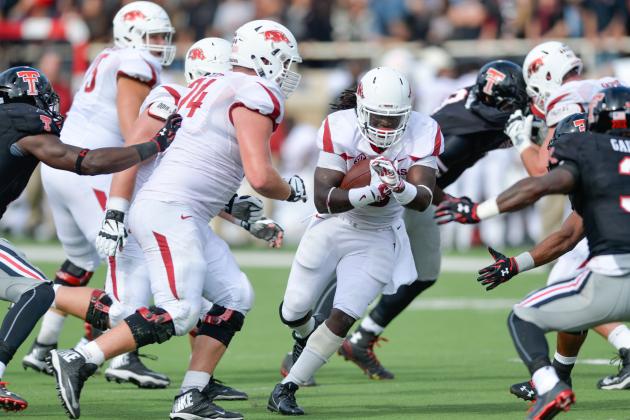
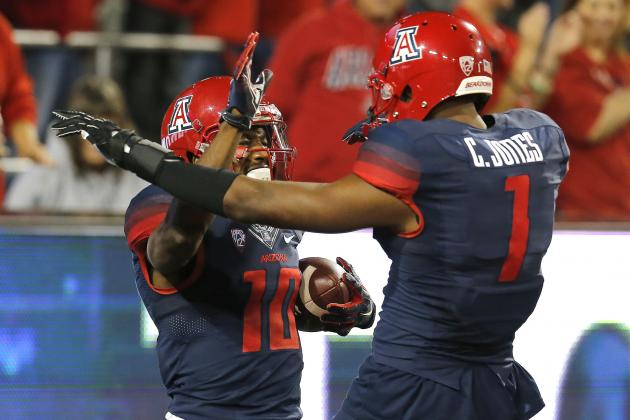
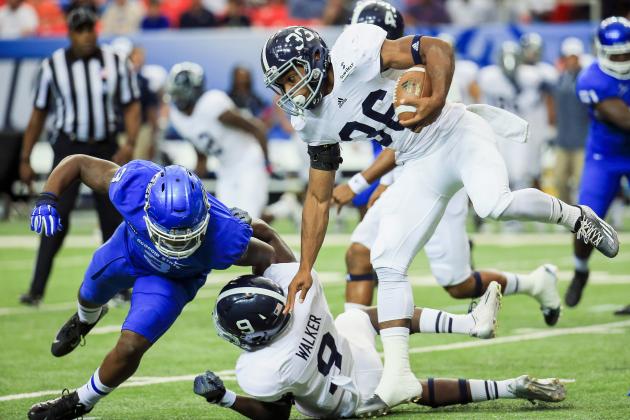
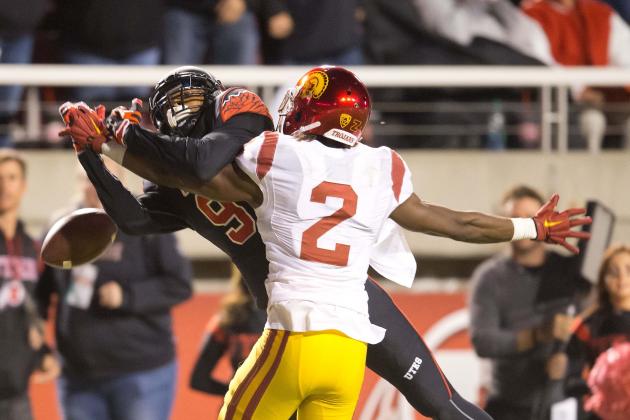
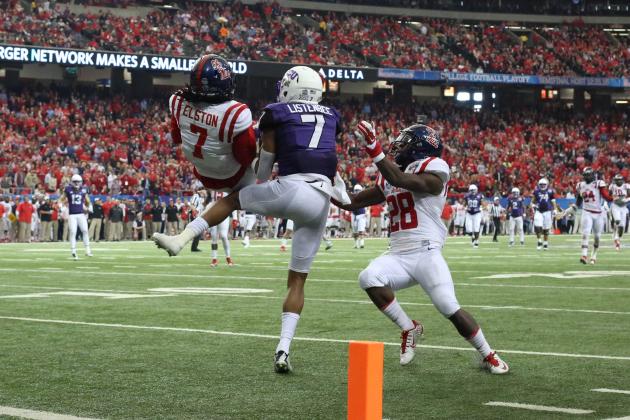
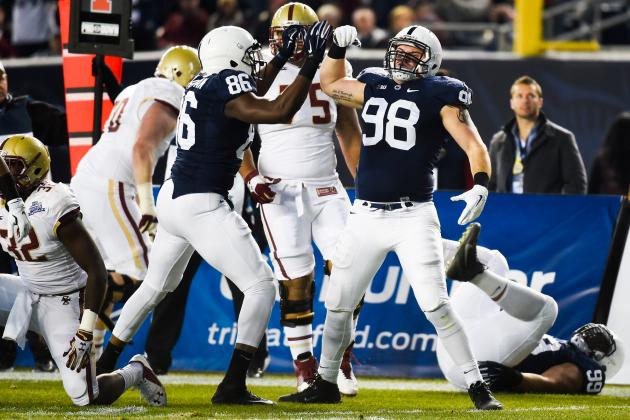

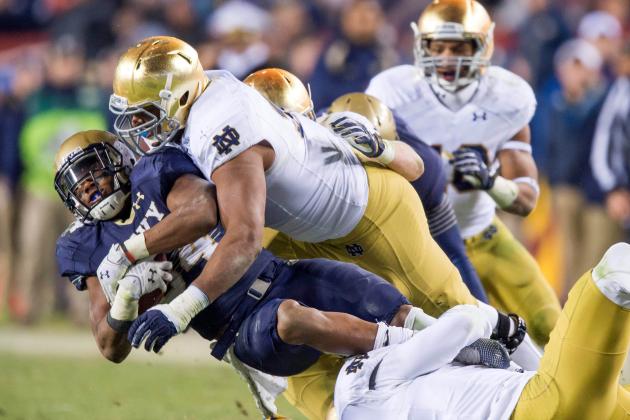
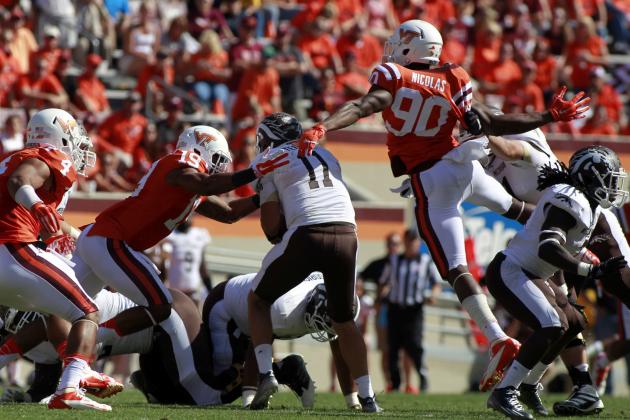
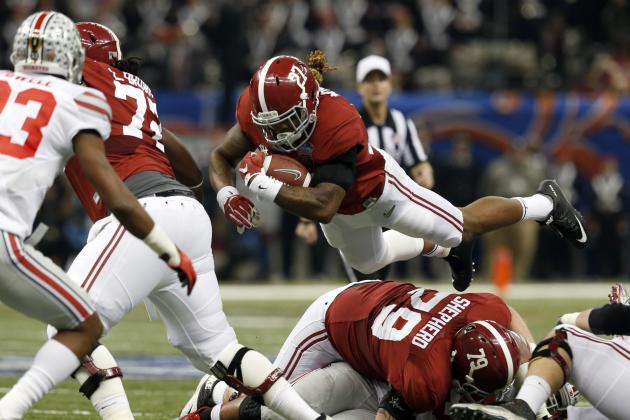
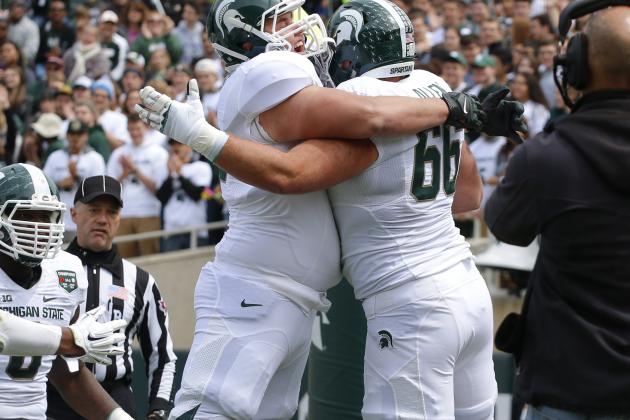

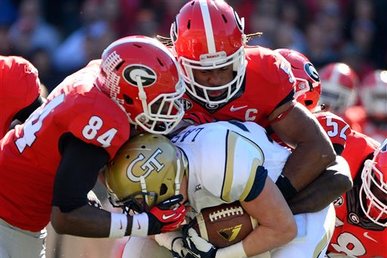
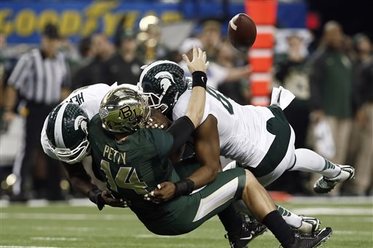

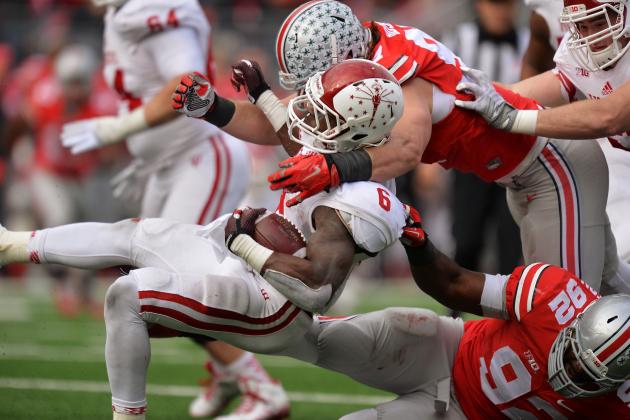
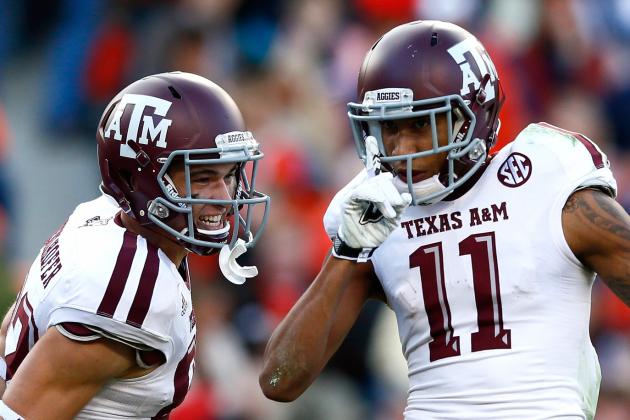


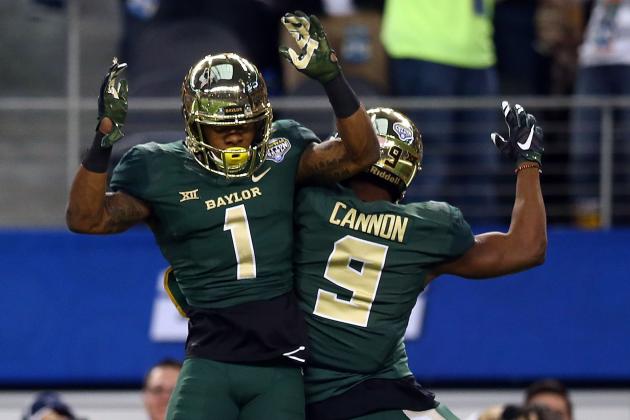
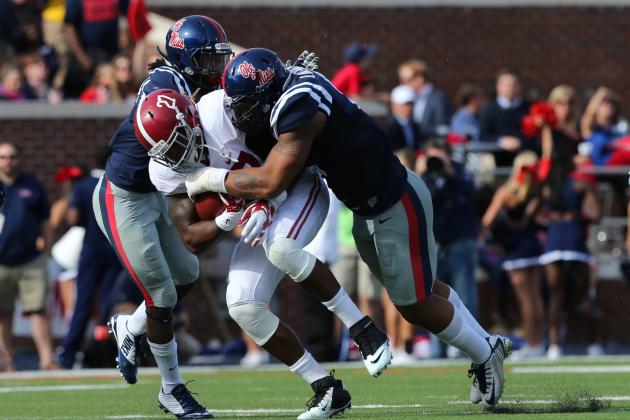
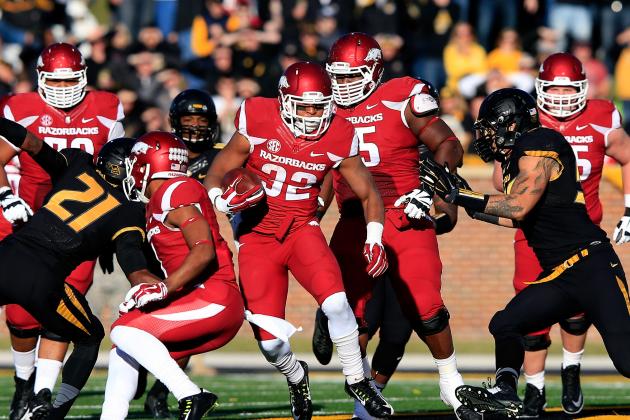
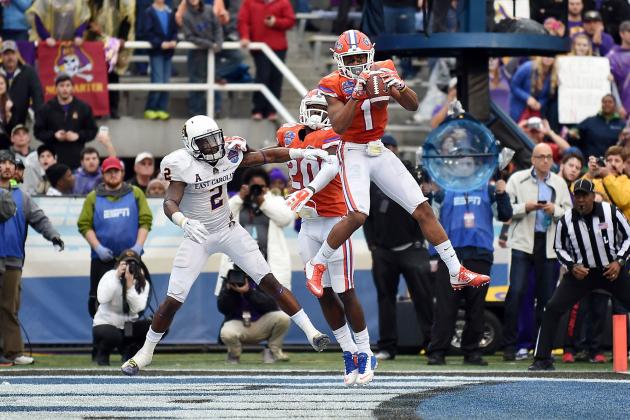
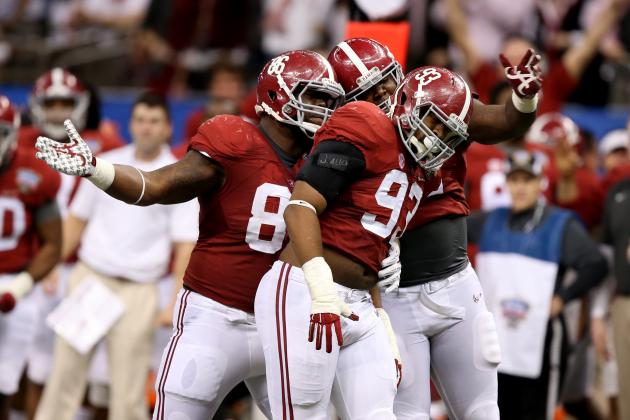
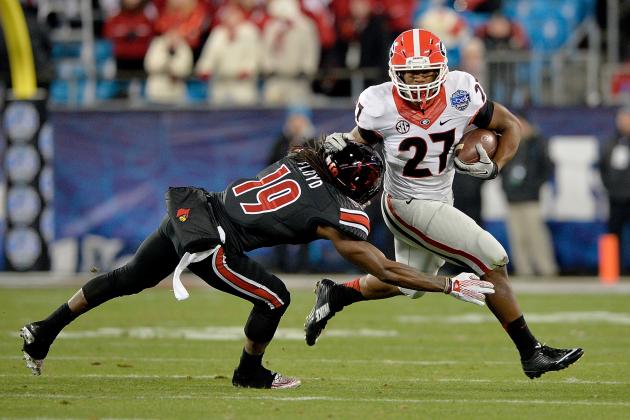
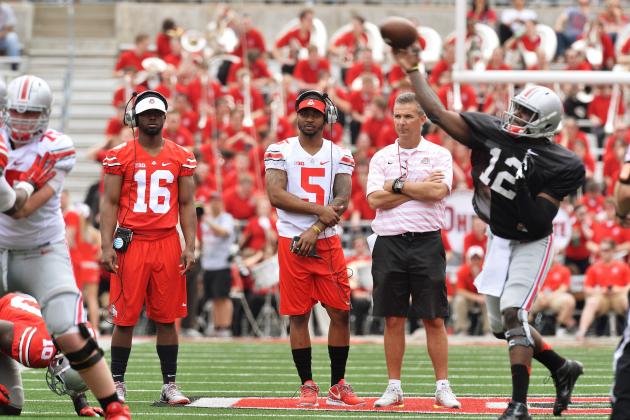
This entry passed through the Full-Text RSS service – if this is your content and you’re reading it on someone else’s site, please read the FAQ at fivefilters.org/content-only/faq.php#publishers.